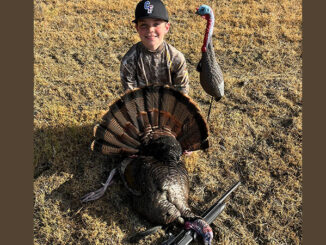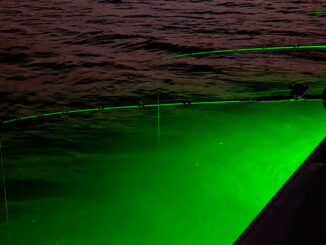North Carolina’s spring striper spawning run up the Roanoke River is unmatched
(Photo by Jeff Burleson)
The spring spawning run in North Carolina’s Roanoke River is second to no

Ten-year-old Knox Penny enjoyed the partial eclipse for a bit, and then provided a total eclipse to a Northampton County longbeard. […]

Nighttime is the right time for catching Santee Cooper’s springtime stripers. […]

Copyright 1999 - 2024 Carolina Sportsman, Inc. All rights reserved.
Be the first to comment